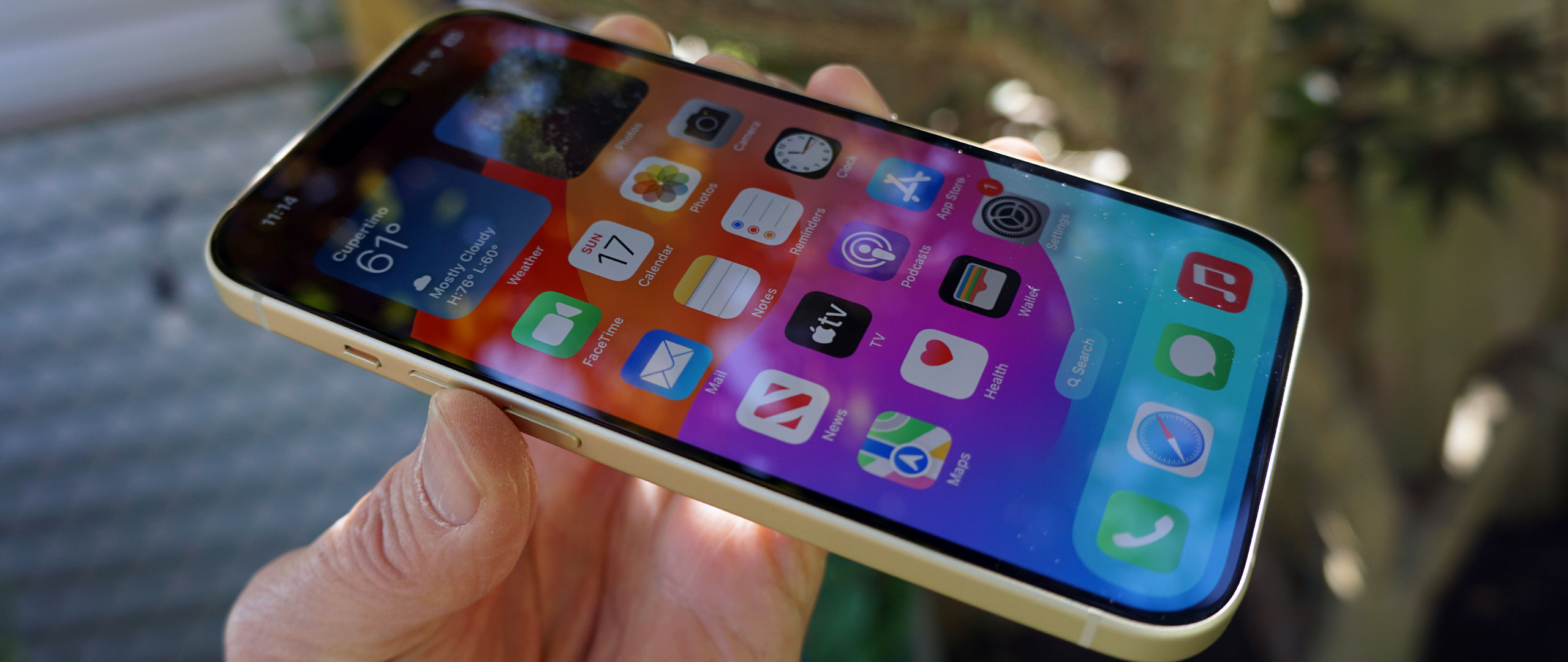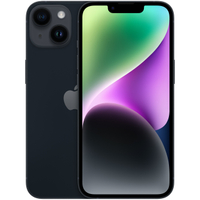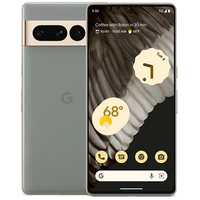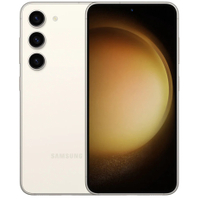TechRadar Verdict
For the first time in a while, Apple's most affordable new iPhone doesn't feel miles away from the flagship. Apple finally waves goodbye to the notch in favor of the Dynamic Island on all phones in its new lineup, and on the iPhone 15 that versatile screen technology is paired with new materials, lovely contoured edges, a powerful A16 Bionic CPU, and, yes, the new USB-C port. Even the photography has been leveled up, with a 48MP camera and new portrait processing capabilities. If you want a fresh iPhone model, this is your most affordable and best option – and you won't feel like you're missing out on much.
Pros
- +
Dynamic Island arrives to retire the notch
- +
Smoother design and soft-feel, color-infused rear glass
- +
A16 Bionic chip
- +
48MP image sensor
Cons
- -
No zoom lens
- -
No macro capabilities
- -
Can run a little hot
Why you can trust TechRadar
Editor's Note
• Original review date: September 2023
• Launch price: $799 / £799 / AU$1,499
• Target price now: $699 / £699 / AU$1,285
Update – March 2024: The base iPhone 15 may not have the insane performance of the Pro model's A17 Pro chipset or triple rear camera, but it remains an incredibly powerful smartphone in its own right that can take on newer rivals from Google, Samsung and even the latest Xiaomi 14 in some areas.
If you're looking for money off, in the US buying refurbished is the best way to go for those after an unlocked handset, with the likes of Walmart serving up 'restored' 128GB iPhone 15s in 'excellent condition' for as low as $679 (at the time of this update, at least). Discounts are easier to come by in the UK, with Amazon knocking £100 off as one example, while retailers in Australia are starting to drop prices by as much as 15%.
Since its debut, iOS 17 has gained a few new abilities – including EU-specific sideloading – but beyond that slight upgrade the rest of this review remains as previously published.

iPhone 15: Two-minute review
Welcome to the more modern 'standard' iPhone 15, or at least a standard iPhone that now seems more in step with its higher-end siblings.
The iPhone 15 has last year's best chipset (the A16 Bionic) and last year's best 48MP image sensor, but Apple has also finally dropped the beleaguered notch in favor of the same Dynamic Island as all the other iPhone 15 models, and last year's iPhone 14 Pro and Pro Max.
That new, more modern screen also matches that of the best iPhone, the new iPhone 15 Pro Max (and Pro) with sunshine-beating 2,000-nit brightness. Even the design essentially matches the best of the iPhone 15 lineup, with newly contoured edges for a more ergonomic feel, and the now-obligatory (thanks to European regulators) USB-C port (though not one that supports USB 3.0 10Gbps speeds).
The iPhone 15 even has something that it can consider all its own: color-infused back glass that's now brushed rather than shiny. It looks great and feels even better, making this iPhone 15 just a little less slippery than its predecessor.
The main camera gets a nice bump over last year's, and the iPhone 15 only suffers in direct comparison to the iPhone 15 Pro and Pro Max (you can find out more about this year's top of the line iPhone in my full iPhone 15 Pro Max review), which also have a 48MP sensor, but one that's larger and thus produces even better images.
Still, the iPhone 15's new 48MP main camera, with the sensor inherited from the iPhone 14 Pro handsets, is nothing to sniff at, and it now shoots at a default 24MP, with the processing stitching together the best of a pixel-binned 12MP image and all the data from the 48MP image.
There is zoom, of a sort, on the iPhone 15. You get 2x zoom, but this is accomplished by cropping into the center 12MP of the 48MP sensor. That's optical, but it doesn't quite compare to the dedicated 3x optical zoom on the iPhone 15 Pro or the Pro Max's 5x optical, let alone the Samsung Galaxy S23 Ultra's 10x optical zoom.
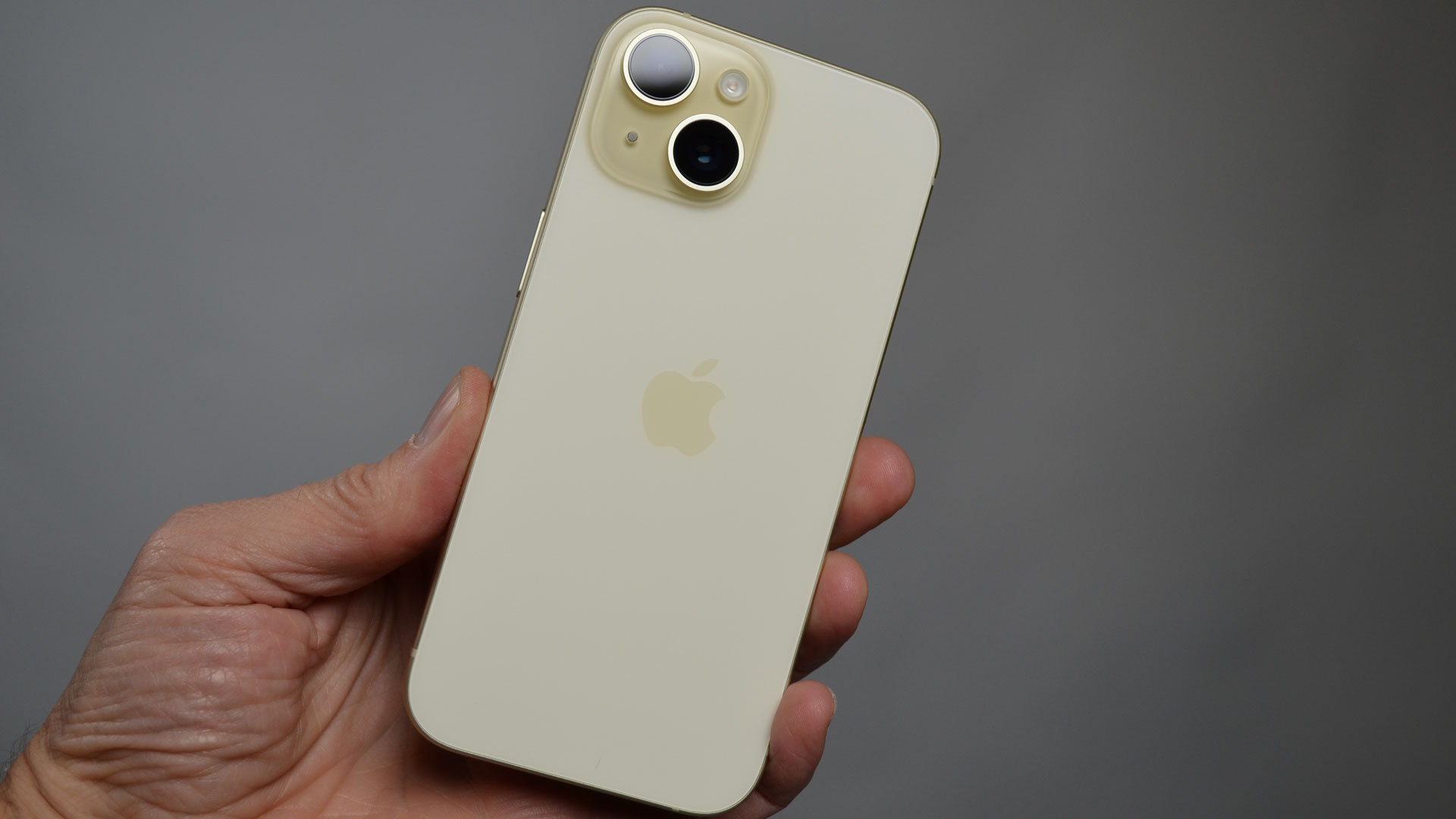
The iPhone 15 remains one of Apple's most pocketable phones (especially with Apple having discontinued the iPhone mini) and it now demands fewer compromises. You get the brightest, notch-free screen, a very able last-generation mobile CPU, and a lot of megapixels to play with for all your smartphone photography needs.
If you'd prefer what is essentially the same phone but with a larger body and screen, check out our iPhone 15 Plus review; and if you want to go Pro but can't quite stretch to the Max, read our iPhone 15 Pro review. But if you want to join the iPhone family, and not pay a lot of money for the privilege, the iPhone 15 is the best palm-sized choice.
iPhone 15 review: Price and availability
- Priced from $799 / £799 / AU$1,499
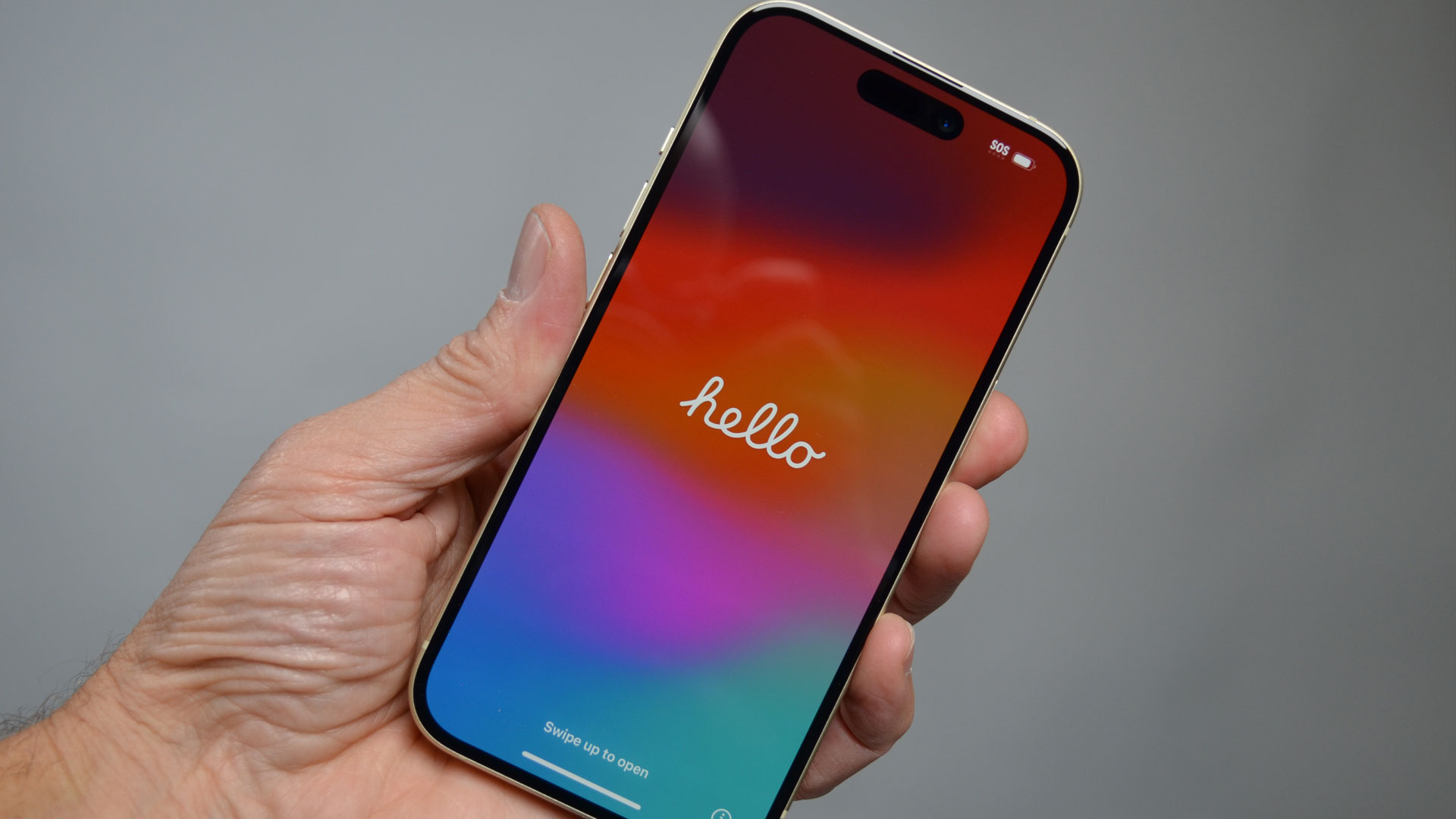
Apple unveiled the iPhone 15 alongside the iPhone 15 Plus, iPhone 15 Pro and iPhone 15 Pro Max at its 'Wonderlust' event on September 12. The phone became available to buy in-store and online on September 22.
Although there was talk of a range-wide price rise this year, the iPhone 15 price (along with the Plus and Pro) is the same as that of the iPhone 14 in the US, with the standard 128GB model starting at $799.
In the UK, the iPhone 14 saw a notable increase in price compared to its predecessor, and the welcome news is that the iPhone 15 gets a similarly notable price cut, starting at £799 where the iPhone 14 started at £849. Australian pricing is marginally higher year-on-year. Full iPhone 15 pricing is as follows:
| 128GB | $799 | £799 | AU$1,499 |
| 256GB | $899 | £899 | AU$1,699 |
| 512GB | $1,099 | £1,099 | AU$2,049 |
If you're already sold on the promise of the iPhone 15, head over to our iPhone 15 deals page for a roundup of all the best offers available now.
- Value score: 4.5 / 5
iPhone 15 review: Specs
Here's how the iPhone 15 compares specs-wise to the rest of the iPhone 15 lineup:
| iPhone 15 | iPhone 15 Plus | iPhone 15 Pro | iPhone 15 Pro Max | |
|---|---|---|---|---|
| Dimensions: | 147.6 x 71.6 x 7.80mm | 160.9 x 77.8 x 7.80mm | 146.6 x 70.6 x 8.25mm | 159.9 x 76.7 x 8.25mm |
| Weight: | 171g | 201g | 187g | 221g |
| Display: | 6.1-inch OLED | 6.7-inch OLED | 6.1-inch OLED | 6.7-inch OLED |
| Resolution: | 2556 x 1179 pixels | 2796 x 1290 pixels | 2556 x 1179 pixels | 2796 x 1290 pixels |
| Refresh rate: | 60Hz | 60Hz | Adaptive 1-120Hz | Adaptive 1-120Hz |
| Chipset: | A16 Bionic | A16 Bionic | A17 Pro | A17 Pro |
| Rear cameras: | 48MP main, 12MP ultrawide | 48MP main, 12MP ultrawide | 48MP wide, 12MP ultra-wide, 12MP telephoto with 3x optical zoom | 48MP wide, 12MP ultra-wide, 12MP telephoto with 5x optical zoom |
| Front camera: | 12MP | 12MP | 12MP | 12MP |
| Storage: | 128GB, 256GB, 512GB | 128GB, 256GB, 512GB | 128GB, 256GB, 512GB, 1TB | 256GB, 512GB, 1TB |
iPhone 15 review: Design
- Smooth edges for a softer look and feel
- Color-infused back glass
- USB-C
- Right-sized for pockets and palms
Like the rest of the models in the new range, the iPhone 15 is instantly recognizable as an iPhone. Its dimensions, 146.7 x 71.6 x 7.8mm, virtually match those of the iPhone 14 (and are quite close to those of Samsung's comparable Galaxy S23, which is slightly lighter).
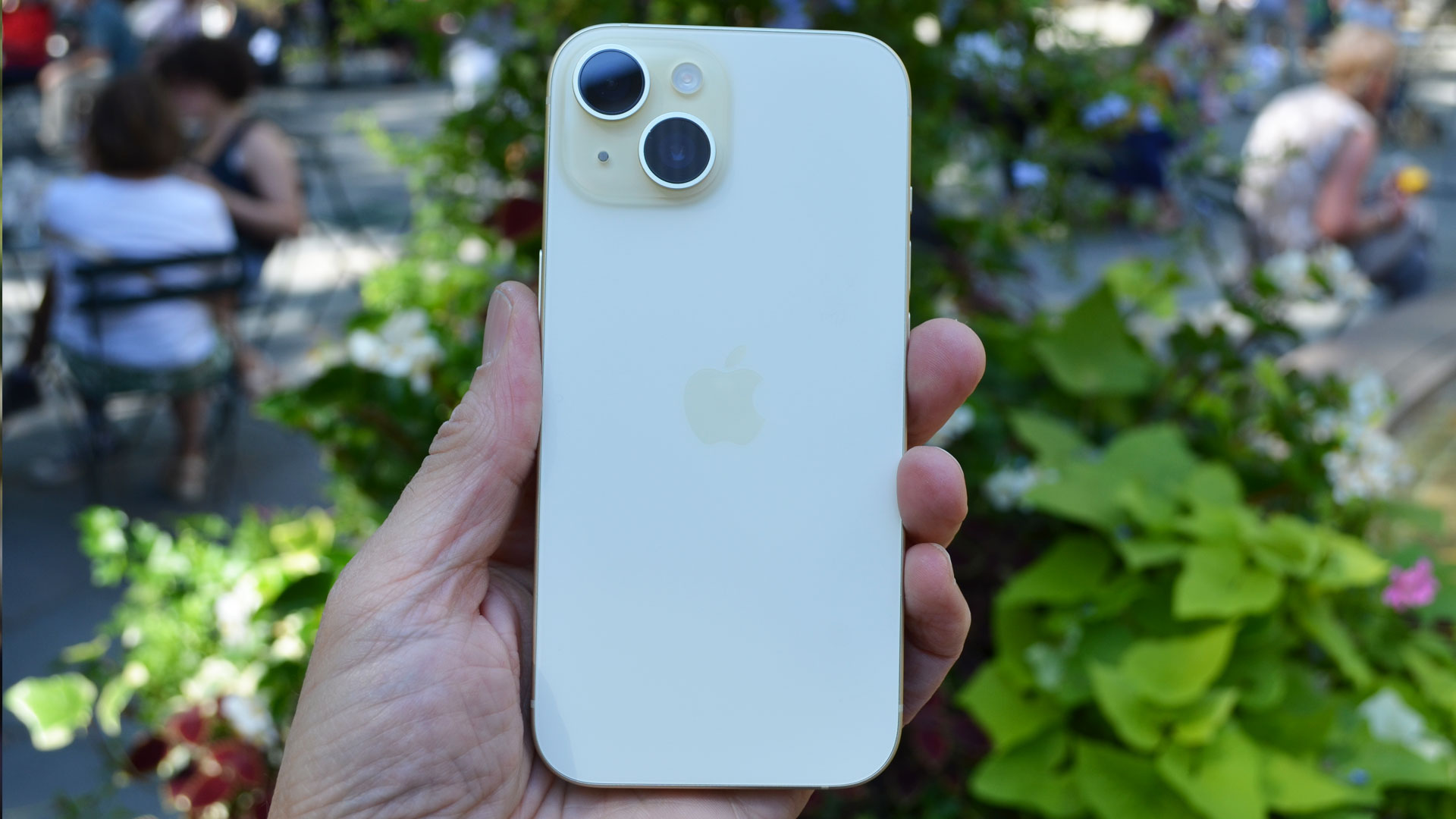
Importantly, though, the iPhone 15 does what the iPhone 14 did not: it moves the base model forward with a refreshed chassis design, a brand-new way of making the phone's glass back, and, of course, the Dynamic Island, which replaces the notch with something more attractive and versatile.
Between that, the contoured edges, and the new USB-C port, there is, design-wise, a lot more alignment between the iPhone 15 and the rest of the new lineup.
The new color-infused glass back is a nice upgrade. I really like the way it looks, and how it perfectly compliments the newly contoured smartphone edges; it has an overall warmer look and feel.
I'm not sure I'm sold on the pastel hues available across all the iPhone 15 phones, though. The yellow of my review unit looks far more muted than the yellow in which the iPhone 14 is available. Your other color options are Blue, Pink, Green, and Black, none of which goes any stronger than relatively muted pastel hues. If you like your colors bold, your best option is Pink – I handled that model backstage at the launch event and I really liked it.
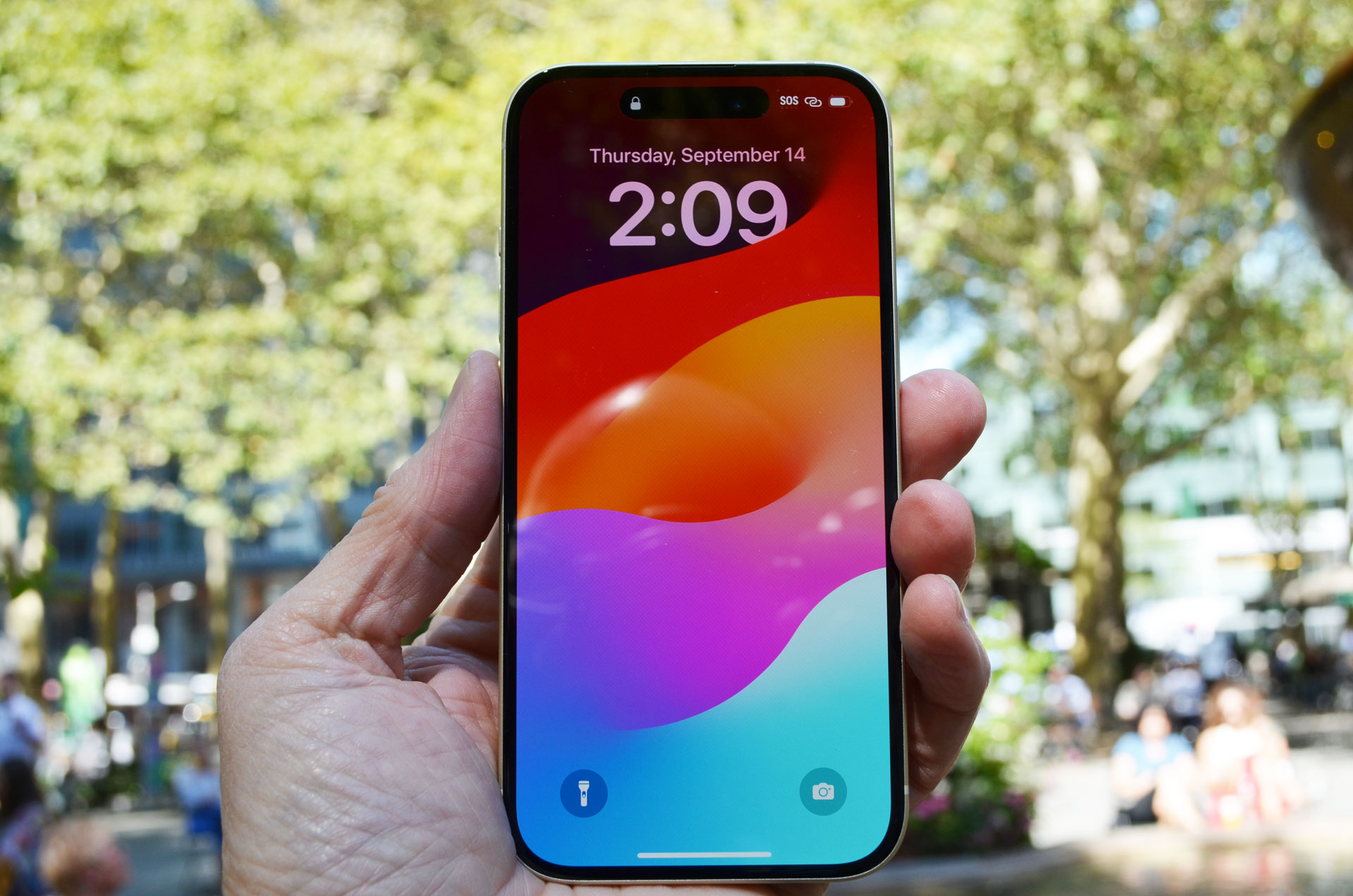
The iPhone's front screen is still protected by the ceramic shield, and the body is made of 75% recycled aluminum. There are other partially recycled materials inside the iPhone 15, too, including cobalt in the battery, and copper through a number of the components.
Aside from the contoured edges, Apple has left the body mostly untouched since the iPhone 14. The power / sleep / Siri button is still in the same spot on the right side, and the dual volume buttons are in their usual spots on the left. While the iPhone 15 Pro and iPhone 15 Pro Max get the nifty new Action button, the iPhone 15 and iPhone 15 Plus still have the classic ring / silence switch, and while there's nothing wrong with this analog switch, if you see a friend with the iPhone 15 Pro you may start pining for your own more versatile button.
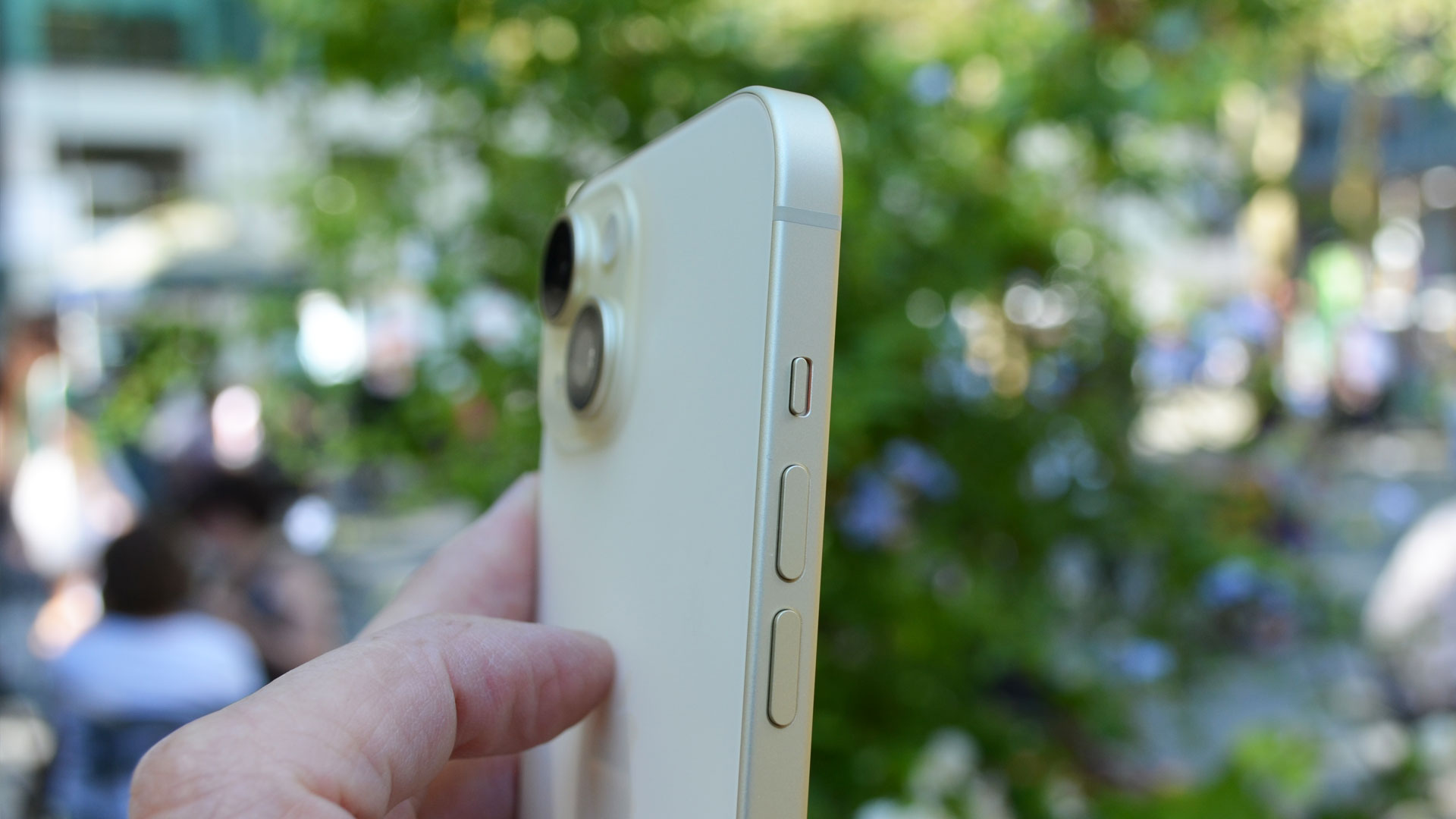
The bottom of the iPhone 15 looks like the bottom the iPhone 14 at first glance, but there's one very significant change here: the slightly larger, new, USB-C port. It's the same as the ones on all the iPhone 15 models, though the iPhone 15 and iPhone 15 Plus will not support high-speed USB 3 connections.
As you already surmised, your old Lighting cables won't work with this port, but Apple does include a USB-C-to-USB-C cable in the box.
Overall, I consider the iPhone 15 to be a design upgrade. It's not an overhaul, but it is a refresh that makes the phone look and feel better than its predecessor.
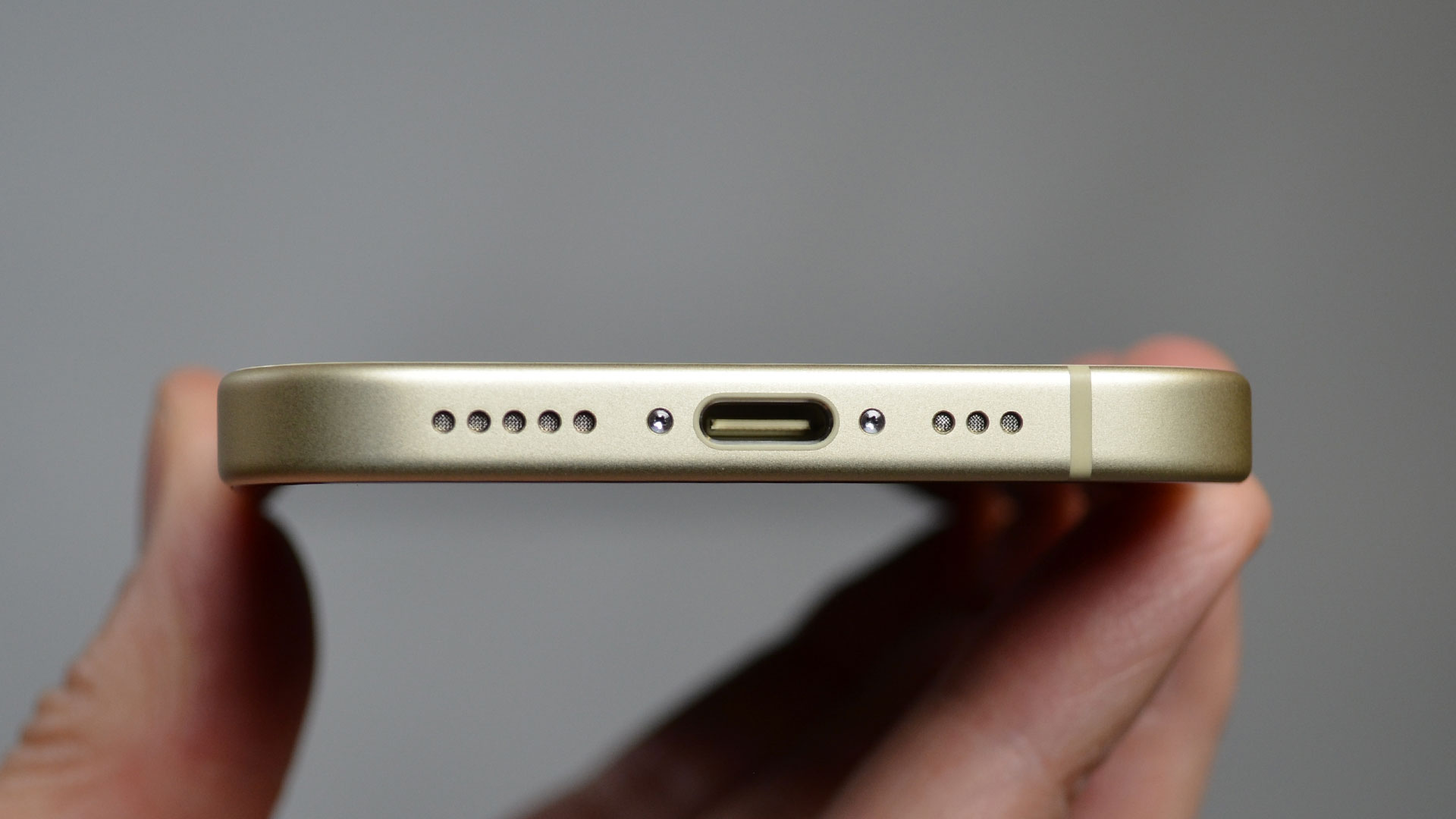
- Design score: 4 / 5
iPhone 15 review: Display
- Upgraded Super Retina XDR
- No change to the resolution, refresh rate or screen size
- Goodbye notch
- Still no ProMotion
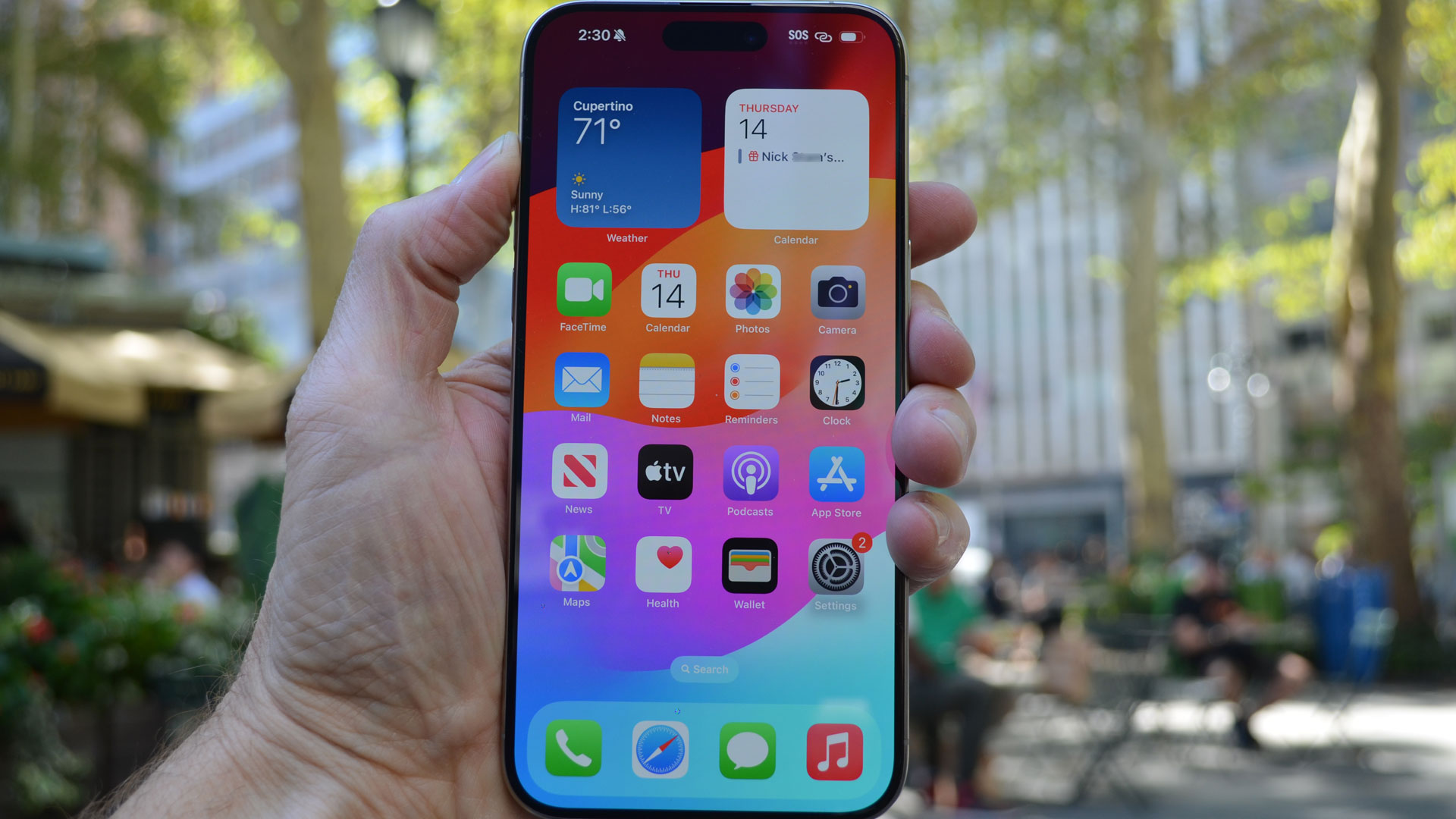
Apple didn't change the resolution of the screen on the iPhone 15, but by shaving a few millimeters off the black bezel surrounding the screen, it gained a few extra pixels. Its 2556 x 1179 resolution is still 460ppi but the display is larger than the iPhone 14's 2532 x 1170 screen.
It's not just the extra pixels that raise the display a – ahem – notch above the iPhone 14. There's the Dynamic Island, which conveys information about things like your next Uber, directions, and what music you're playing. A tap on it gives you even more information. This is all the same functionality that iPhone 14 Pro and Pro Max users have to come to enjoy and now it's part of the iPhone 15 and iPhone 15 Plus.


The other big upgrade is in brightness. The iPhone 15's screen now has a max 2,000 nits brightness and in my tests, it is noticeably brighter than the iPhone 14. Like the rest of Apple's Super Retina XDR OLEDs, the iPhone 15's 6.1-inch screen supports a wide color gamut and 2,000,000:1 contrast ratio for inky blacks. In my experience, everything looks great on the display.
It does not support ProMotion, which means the refresh rate is stuck at 60Hz and there's no support for Always On. iOS 17's new StandBy mode still works when you dock your phone sideways on a MagSafe wireless charger, but the screen will either be on or off.
It's really not fair to hold this against the iPhone 15. It's a $799 phone and if you want flagship features, Apple expects you to pay flagship prices. ProMotion, with the ability to stop down to 1Hz, is Pro-level stuff, at least if you live in Apple's world. The Samsung Galaxy S23 offers variable refresh rates from 48Hz to 120Hz.
Overall, though, this is an excellent smartphone display with enough capability and features to satisfy most users.
- Display score: 4 / 5
iPhone 15 review: Cameras
- New 48MP camera
- Excellent portrait features
- 2x "zoom"
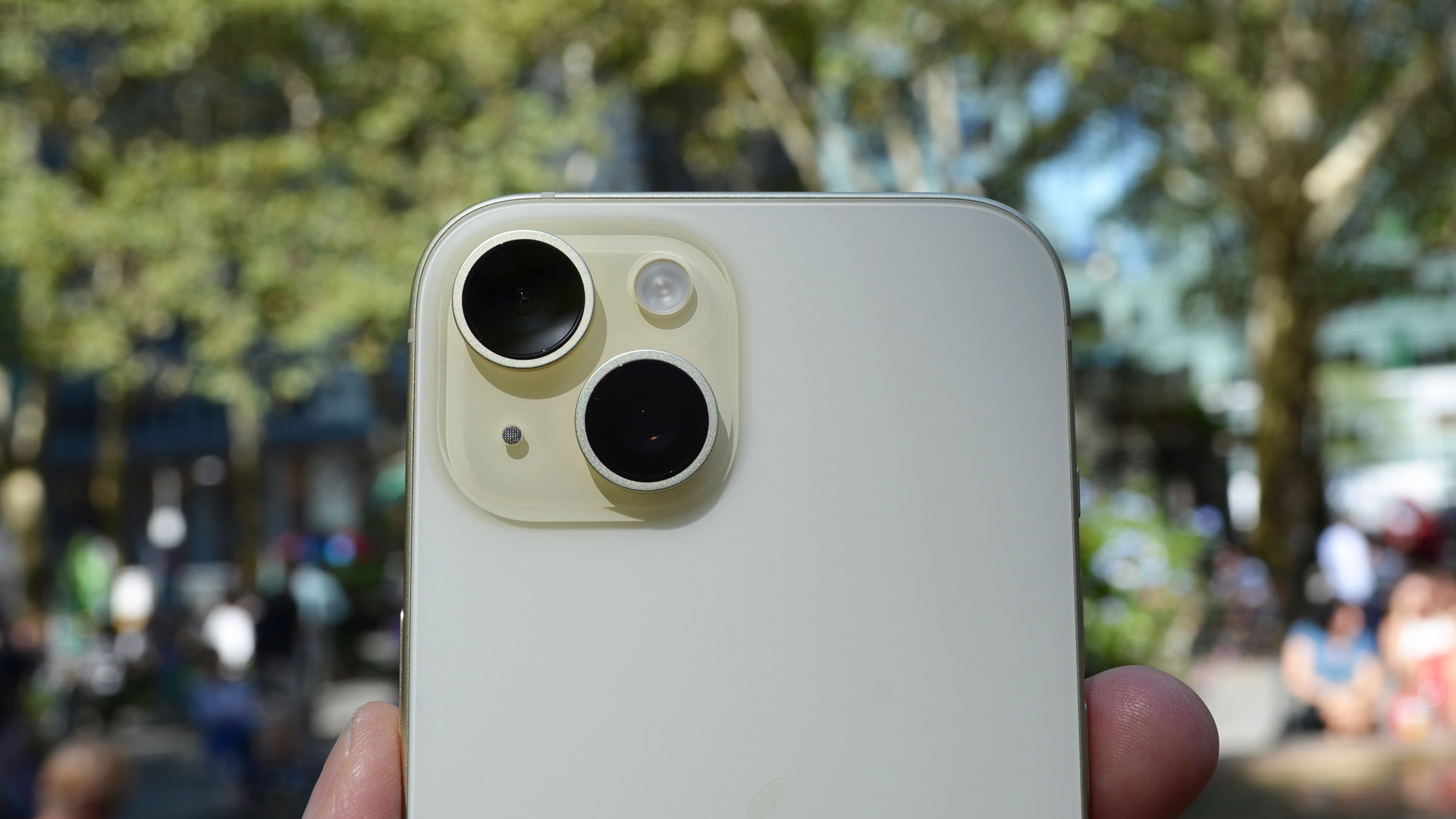
There are still just two lenses on the back of the iPhone 15, but they are not the same pair as you found on the iPhone 14. Okay, the 12MP ultrawide is basically the same, but the main camera is now the same 48MP lens that you'll find on the iPhone 14 Pro. That's not the same sensor as the larger one that now resides inside the iPhone 15 Pro and iPhone 15 Pro Max, mind.
Even so, this is a significant upgrade from the iPhone 14's 12MP main camera, and all of the cameras are backed by the last-gen A16 Bionic and an upgraded image pipeline technology (photonic engine and computational photography) that affords a few cool, new photography features.
Apple has also added millimeter distinctions to all the camera magnifications that approximate what you might find if you were using physical lenses. So, you can now see that the ultrawide camera is like a 13mm lens (on lenses, mm defines the field of view and magnification) and 2x is 52mm.
First, though, all the cameras on the iPhone 15:
- Main: 48MP f/1.6
- Ultrawide: 12MP f/2.4
- Front-facing TrueDepth: 12MP f/1.9
This does not count the 2x optical zoom that is actually part of the 48MP lens. The iPhone 15 takes the middle 12 pixels of the full frame to deliver an optically zoomed-in image. This is more useful than it sounds. It's a great way of getting closer to the action without moving closer and, unlike digitally zoomed photos, the quality of these 12MP images is, essentially, optical quality. It's really just a smart live crop, but I still like it.
If you want more zoom from a $799 smartphone, you might want to look at the Samsung Galaxy S23, which includes a 10MP, 3x optical zoom camera.
All photos from the main camera also look better because they're all 24MP by default. Apple's new photo processing takes binned 12MPs (four pixels at a time from the 48MP sensor) and then combines that with a full-frame 48MP image.
The result is pictures that look better than what I could get with the iPhone 14. When I compared some of the images with what I took using a Samsung Galaxy S23, the iPhone 15 consistently delivered more truthful recreations of the world I see around me. I like Samsung photography, but it still tends to over-ripen colors. Flowers are too bright and the sky is too blue.



Portrait photography across the iPhone 15 line has undergone a useful transformation. Basically, any photo you take with the main camera can be a portrait image as long as the iPhone identifies a person or a pet and collects depth information. More often than not, in my experience, it does.
What this means is you can take a photo and then change it into portrait mode after the fact. You'll know if a photo can be edited into portrait mode by the little "Portrait f" symbol on it. You can tap on this symbol to transform the photo into Portrait Mode. If you edit the photo, you can make more adjustments, including adjusting the depth of field. Better yet, you can choose where you want to focus. All it takes is a tap on a subject or object. What this means is that you almost never have to be upset when you don't choose "Portrait Mode" for a photo. It's a great update that I enjoyed using.
Video quality is still excellent and you can shoot up to 4K 60 fps. I enjoy shooting in Cinematic mode, which lets you add a short focus effect to all your videos and choose which subject or object you want to focus on while you shoot. If you didn't like your initial choice, you can always edit and select a different focus subject.
Low-light photography is good and the 12MP TrueDepth lens is an excellent selfie camera. Plus, you can transform virtually any selfie into portrait mode with a tap.
This is unquestionably the best set of cameras we have ever seen on an iPhone base model. They're not as good as those on the iPhone 15 Pro Max, and they lack both stronger telephoto and macro capabilities. If you want that, you'll pay more, but for the price, this is all you should want or need in an iPhone that doesn't have "Pro" in its name.
- Camera score: 4 / 5
iPhone 15 review: Camera samples













iPhone 15 review: Performance and specs
- A16 Bionic
- Is 128GB enough storage?
It's no surprise that Apple has paired its upgraded iPhone 15 with last year's best mobile CPU, the A16 Bionic. It's a powerful processor featuring a 6-core CPU, 5-core GPU, and a 16-core Neural engine, all backed by 6GB of RAM. It's not as powerful or, in my testing, as fast as the new A17 Pro in the iPhone 15 Pro and iPhone 15 Pro Max, but it provides more than enough power for most iPhone owners.
I do wish the iPhone 15 started with 256GB of storage, but then I still remember the days when we started with just 64GB (or less!).
In my Geekbench 6 tests, the iPhone 15's A16 Bionic essentially matched the numbers of the one found in the iPhone 14 Pro. It also still bests Qualcomm's Snapdragon 8 Gen 2 found in the Samsung Galaxy S23.
Numbers are interesting, but it's real-world performance that matters. The iPhone 15 can handle pretty much any task you throw at it. I used it in a variety of scenarios, from streaming videos and web browsing to 4K video editing and action games.
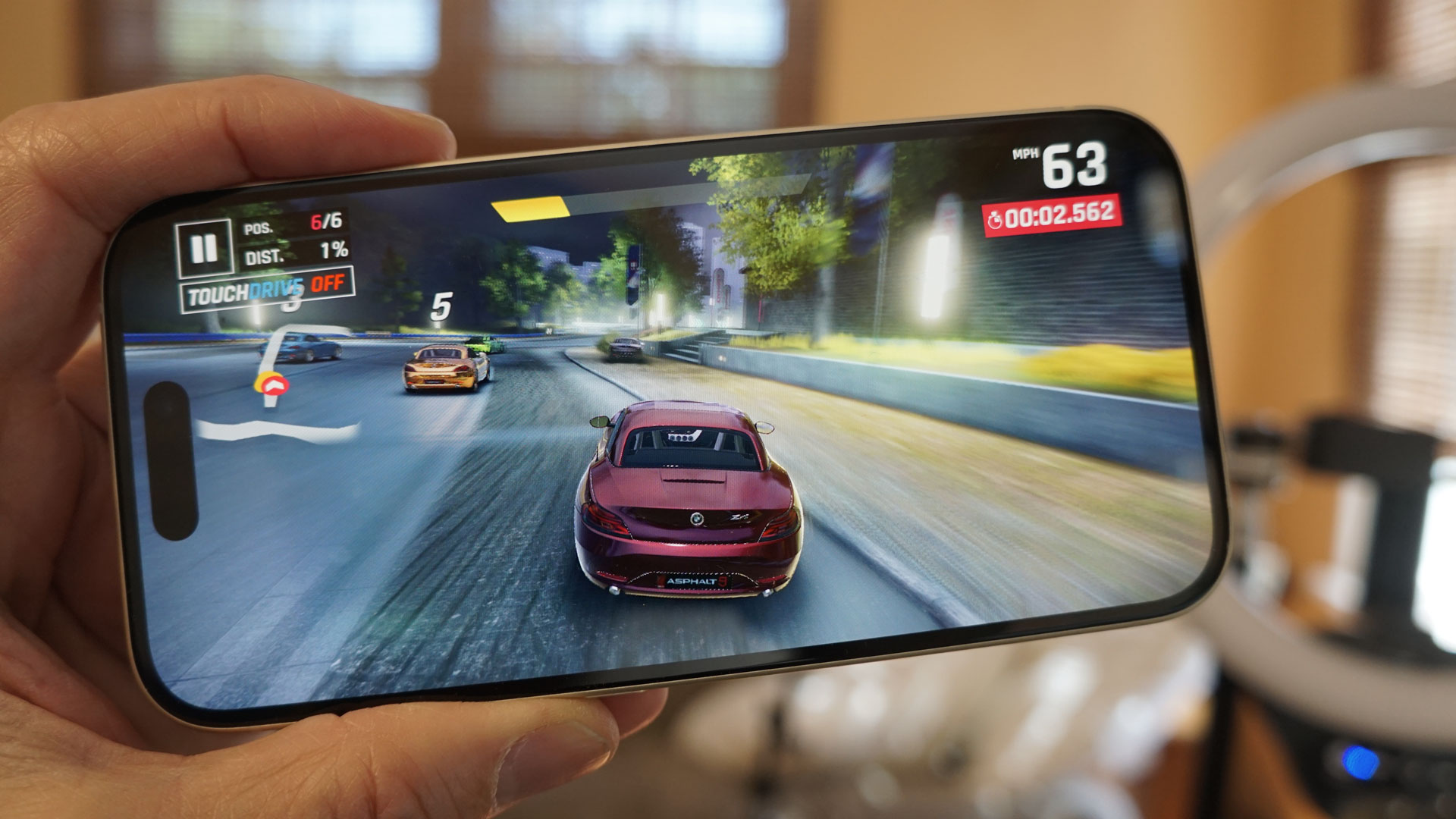
Asphalt 9: Legends looked great and smooth on it. One thing I did notice though is that, after a few minutes of gameplay, the back of the iPhone 15 got noticeably warm. I wonder if the aluminum body transmits that heat more readily than the A16 Bionic's original stainless steel-bodied home in the iPhone 14 Pro.
iPhone 15 (and iPhone 15 Plus) owners, though, should find little to complain about in the performance department.
- Performance score: 4 / 5
iPhone 15 review: Software
- iOS 17 on board
- Contact posters
- Lots of small and useful changes
All new iPhone 15 models come with iOS 17 preinstalled. It's not one of Apple's biggest mobile platform updates, but it does offer some nice quality-of-life improvements.
Some are subtle, like the redesigned iMessage menu or new gesture-based on-screen emoji control in FaceTime. Others are bigger, like Contact Posters and the Name Drop feature that lets you share that contact information by simply moving phones within a centimeter or so of each other. The "Bring Devices Together" feature in AirDrop is on by default (my test units kept connecting to each other), so you might want to turn it off until you're ready to use it or fully understand it.
Even without an always-on-screen, the aforementioned Standby feature is a nice way to charge your iPhone 15 while keeping something useful on-screen (like the time or a calendar).
- Software score: 4 / 5
iPhone 15 review: Battery life
- All-day battery
- USB-C
- Bring your own power adapter
Apple doesn't publicize battery size, but based on the promises Apple is making in the specs, nothing has really changed. The iPhone 15 is still rated for 20 hours of video playback, 80 hours of audio-only, and a 50% recharge in 30 minutes with the optional 20W charger.
In my tests and with mixed-use, the iPhone 15 can give you a full day of battery life, though that does not mean 24 hours. It seems to get in the range of 15 hours. I also found that recharging with a 20W adapter matched Apple's promises. I would love to see faster wired fast-charging.
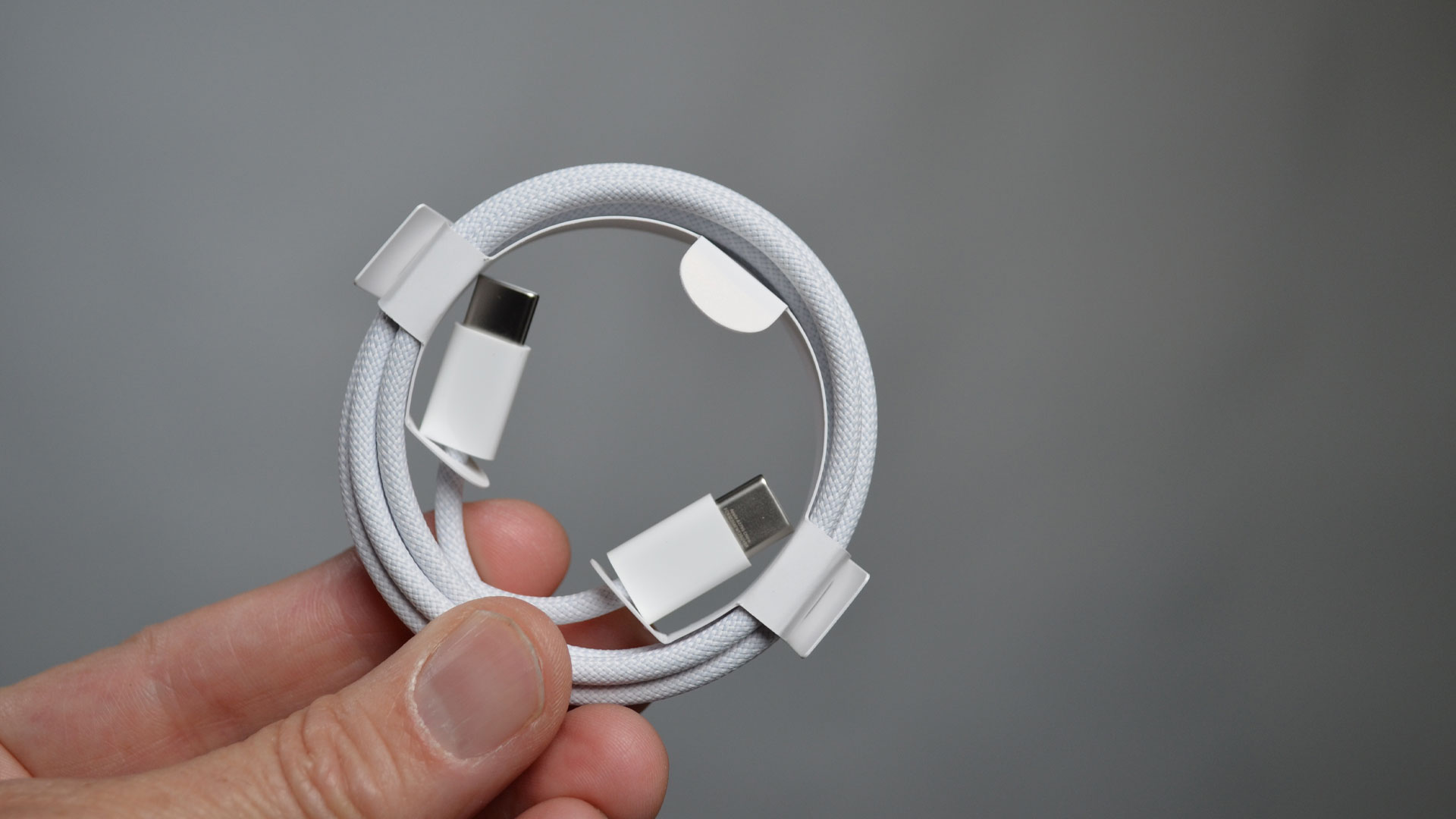
When it's time to recharge, you'll now use the included USB-C cable, which, unlike previous iPhone cables, features a woven covering instead of rubber and plastic. I like it.
The iPhone 15's battery is smaller than the one you'll find in the iPhone Plus, but it's also running what might be a slightly less efficient chip than that found in the iPhone 15 Pro. The latter now has the 3-nanometer A17 Pro, while the iPhone 15 runs a 4-nanometer A16 Bionic.
If battery life is more important to you, you might want to look at the more expensive iPhone 15 Pro (it's rated for 23 hours of video playback) or the larger iPhone 15 Plus, which could get 26 hours of video playback.
- Battery score: 4 / 5
iPhone 15 review: Verdict
Apple's most affordable new iPhone no longer feels miles away from the flagship. It has the same Dynamic Island as its more expensive siblings and pairs that feature with new materials, lovely contoured edges, a powerful A16 Bionic CPU, and, yes, the USB-C port. Even the photography capabilities have been leveled up with a 48MP camera and new portrait processing capabilities. If you want a fresh iPhone 15 model, this is your most affordable and best option, and it won't make you feel too much like you're missing out.
Should I buy the iPhone 15?
| Attributes | Notes | Rating |
|---|---|---|
| Design | The curved edges and smooth, color-infused glass make this a most modern iPhone | 4 / 5 |
| Display | Losing the notch and gaining the dynamic Island is a net poisitive, as is the lovely and now brighter screen. | 4 / 5 |
| Performance | It's hard to ask for more than the A16 Bionic, unless you want the A17 Pro, and then you should be looking elsewhere. | 4 / 5 |
| Camera | A nice big main camera leap is paired with some truly impressive computational photography | 4 / 5 |
| Battery | Decent battery life | 4/ 5 |
| Software | iOS 17 is a solid update | 4 / 5 |
| Value | Apple is finally giving you more for you money. | 4 / 5 |
Buy it if...
You want a small iPhone
The iPhone 15 is now the right mix of size, features, and performance.
You want an affordable iPhone
This iPhone strikes a nice balance between price and cutting-edge features.
You want a camera upgrade
Between the new 48MP main camera and some excellent portrait photography capabilities, this may be a compelling upgrade for iPhone 14 owners.
Don't buy it if...
You want a bigger phone
This 6.1-inch screen might feel cramped if you own a Pro Max or Plus.
You want bigger zoom
The 2x optical zoom that uses the main camera's center 12 MP doesn't quite compare to 3x optical zoom on the iPhone 14 Pro or Samsung Galaxy S23.
iPhone 15 review: also consider
The iPhone 15 boasts several key upgrades over the iPhone 14, but if you're simply looking for a capable 6.1-inch iPhone to see you through the next few years, then the standard iPhone 14 is an excellent choice that's only going to get cheaper.
Google Pixel 7 Pro
For a little bit more money, Google's latest flagship boasts a larger display and better cameras than the iPhone 15. You'll get a supremely clean take on Android, too, though it's worth noting that the Pixel 8 Pro is due to land soon.
If you're keen on the iPhone 15's size, camera and performance credentials, but aren't a big fan of iOS, then the standard Samsung Galaxy S23 offers similar specs in an Android-powered package.
| iPhone 14 | Google Pixel 7 Pro | Samsung Galaxy S23 | |
|---|---|---|---|
| Price (at launch): | From $799 / £849 / AU$1,339 | From $899 / £849 / AU$1,299 | From $799.99 / £769 / AU$1,249 |
| Display: | 6.1-inch Super XDR (2532 x 1170) OLED | 6.7-inch adaptive 120Hz (1440 x 3120) LTPO OLED | 6.1-inch (2340 x 1080) OLED |
| Cameras: | 12MP wide, 12MP ultrawide | 50MP main, 48MP 5x zoom, 12MP ultra-wide macro | 50MP wide, 12MP ultrawide, 10MP telephoto |
| Battery: | 3,279mAh | 5,000mAh | 3,900mAh |
How I tested the iPhone 15
I tested the iPhone 15 in New York City and at home. I took photos, recorded videos, browsed the web, edited videos, played games, messaged, and made calls. Basically, I treated it like any other smartphone.
Read more about how we test.

A 38-year industry veteran and award-winning journalist, Lance has covered technology since PCs were the size of suitcases and “on line” meant “waiting.” He’s a former Lifewire Editor-in-Chief, Mashable Editor-in-Chief, and, before that, Editor in Chief of PCMag.com and Senior Vice President of Content for Ziff Davis, Inc. He also wrote a popular, weekly tech column for Medium called The Upgrade.
Lance Ulanoff makes frequent appearances on national, international, and local news programs including Live with Kelly and Mark, the Today Show, Good Morning America, CNBC, CNN, and the BBC.
